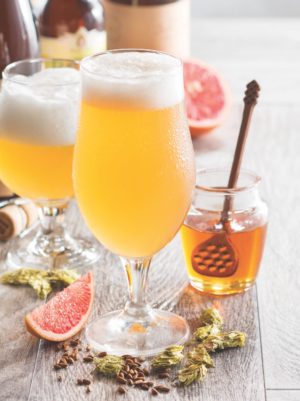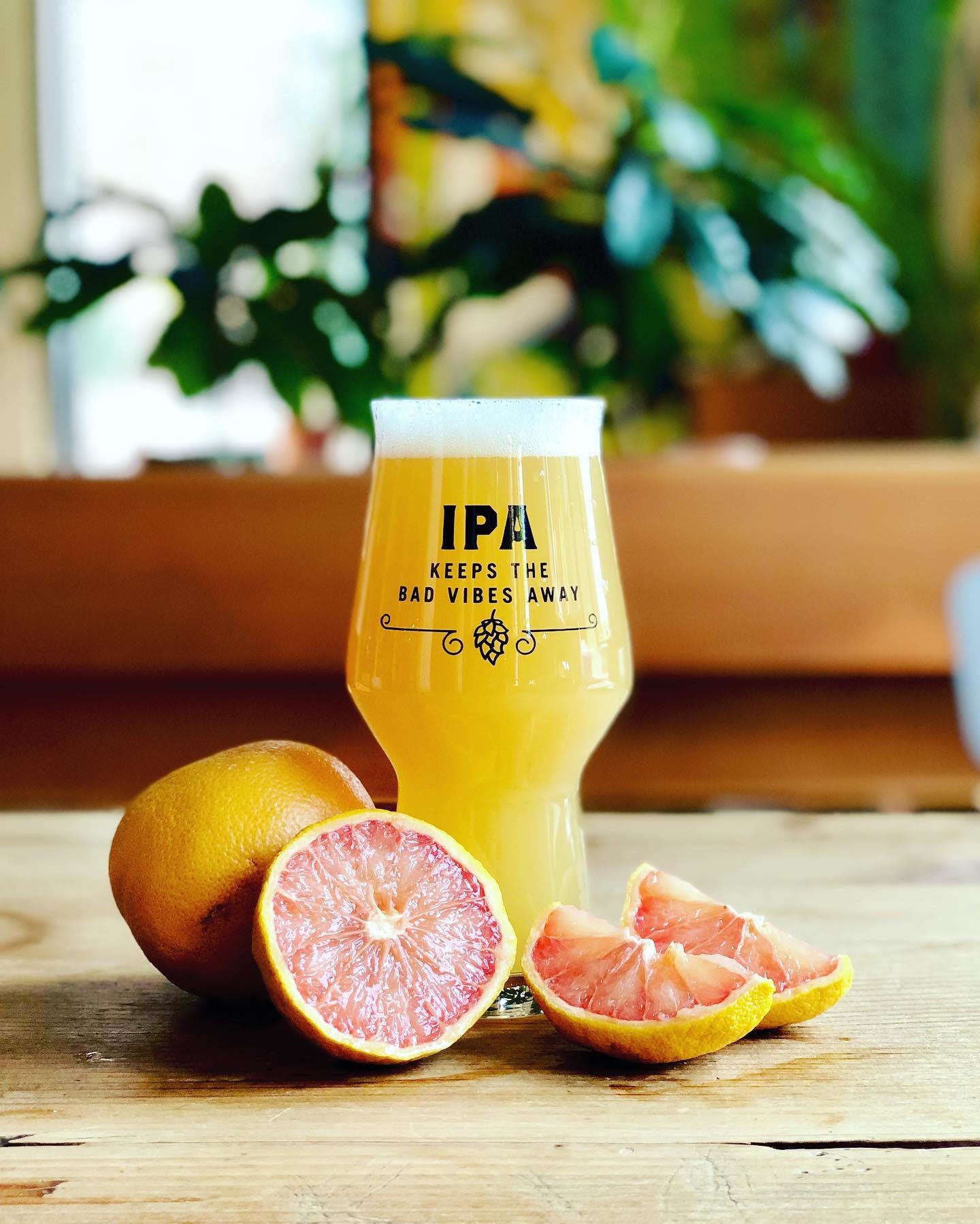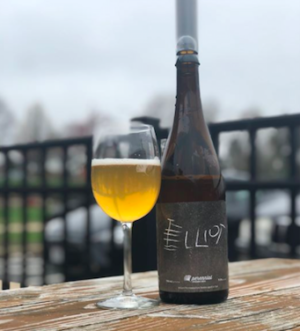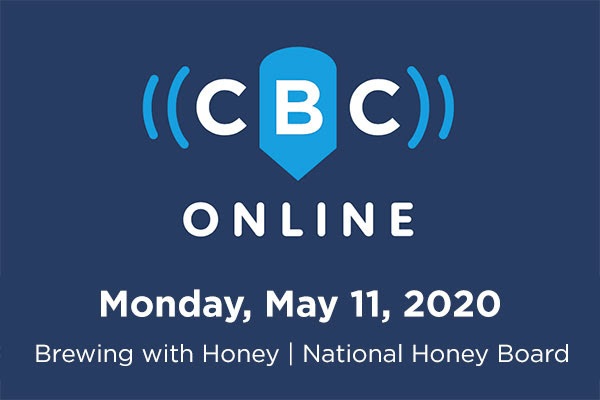
The world is seemingly on hold until we know what the coronavirus’s long-term effects are on small businesses, trade shows and the economy as a whole. But there is one industry that is stepping up amid these trying times and saying, “Want to see what we can do? Hold my beer.” It’s the craft brewing industry.
The National Honey Board has been closely monitoring the craft brewing industry through this pandemic, watching the difficult decisions breweries have been forced to make through forced closures, but also how others have begun to adapt to this temporary new normal. Breweries have switched solely to to-go or carry out orders; others have begun delivering beers, and some have fully adapted to offering online stores.
Something else we started to see was a surge of newly released honey beers, particularly from our former Honey Beer Summit attendees. Trillium Brewing Company, a Boston-based brewery in Boston that attended the St. Louis Summit in 2017, re-released its popular selling honey beer, Cutting Tiles. It sold out by 9 a.m. the day it was added to the online store. Trillium also released a new honey beer in April with video promos of honey dripping down the bottle. Dangerous Man, a brewery in Minneapolis, attended our Austin Summit in 2018. In April alone they have released three new honey beers to their lineup. Further, St. Louis-based Perennial Artisan Ales also released a new honey beer. We caught up with Rob Miller of Dangerous Man and Chris Kinast of Perennial Artisan Ales to discuss strategies during COVID-19 and April’s new made-with-honey beer releases!
Dangerous Man Interview
NHB: Can you talk about COVID-19 and how the brewery has had to shift during this unprecedented time? How has this changed how you operate, and how are customers and employees handling it?
Miller: I am so proud of how our staff and company has pivoted to handle COVID-19. In some sense, our business model allows us to be nimble and flexible, which gives us an advantage when times change. We also built a to-go shop three years ago, and that has been keeping us afloat. In one week we were able to shift our entire business to only sell Crowlers in our to-go shop. We changed our days and hours of operation to reflect what customers needed, and we were at the forefront of creating a mostly contact-less sales process. The next week, we added curbside for those customers who needed even less contact to feel safe. We turned our taproom into a production/office/storage area so staff could spread out more easily and we could have more space for Crowler production. Our staff led the charge with their heart to work hard, be responsive, and creative to keep our business afloat. Our customers have responded with amazing support. It makes us feel like they want to see us make it through this time so we can return one day to being their neighborhood taproom on the corner.
NHB: The new Orange Cream Trifle Pastry Ale was just released in April. Did your strategy for this release change at all, or was it business as usual? Can you tell us any differences that took place in having a beer release during this time compared to a normal release, if any?
Miller: Business as usual. We are always trying to be creative, pandemic season, or not. The real difference is that the beer is only sold in our Crowler cans out of our to-go shop and not on tap in the taproom.
NHB: What are customers saying about the made-with-honey release?
Miller: They loved it. Our customers are intrigued by honey and are always curious to try all of our beers made with honey. The Orange Cream Trifle Pastry Ale was one of our fastest selling beers to date, even with having no taproom sales.
NHB: What was the thought process behind the technical side of Orange Cream? What flavor of honey do you use and what flavor notes do you get with each? What was the thought process behind selecting the honey for the brew? (We love that this tastes like cream soda!)
Miller: When designing the Orange Cream Trifle Pastry Ale, we wanted a super creamy, easy-drinking, but flavorful beer. We wanted it to taste like a creamy orange dessert, with the honey contributing flavors resembling the crust of a pie. We knew we wanted darker, richer honey than the basswood honey we usually use. We added a blend of wildflower honey and a small amount of buckwheat honey to give us that rich flavor we're looking for. We didn't want the buckwheat to overwhelm, so we only added a very small amount. Also, we feel we get the best flavor from the honey by adding it straight to the fermenting tank. It's a sticky process, but it is well worth the results we've gotten.
NHB: Why do you like brewing with honey? What benefits does honey serve the beer(s) you make?
Miller: I like brewing with honey for many reasons. I love all the varieties of honey and trying to pick which varietals should go into which beer. Honey is an ingredient that is still somewhat new to me and a bit of a challenge. Honey contributes amazing flavor, helps boost our gravity, and helps to dry our beer out, if that's what we're going for. We have loved the results in our braggots and will continue to use many varieties of honey going forward.
NHB: Any made-with-honey releases planned for May?
Miller: We do have some upcoming beers featuring honey. We have a Wheat Lager brewed with spring blossom honey, which is super light and lets the honey really shine. In May we will be brewing a big double IPA with 20% wildflower honey. We plan to keep brewing with honey quite often. Bees are the most fascinating creatures, and I want to do all I can to keep supporting beekeepers.

Perennial Artisan Ales Interview
NHB: Can you talk about COVID-19 and how the brewery has had to shift during this unprecedented time? How has this changed how you operate, and how are customers and employees handling it?
Kinast: COVID-19 for sure has changed the landscape for craft beer, both locally and globally. We’ve shifted to brewing less beer and canning all of it, and selling as much as we can with a non-contact curbside service. We’ve luckily been able to still distribute some cans throughout our distribution footprint.
NHB: Were you planning on releasing Elliot in April before the pandemic? Were there talks to hold the release or was it business as usual?
Kinast: This is the first and only time we’ve brewed Elliot. This being a naturally carbonated beer, we don’t have a specific timeframe for it. The beer will tell us when it’s ready. This particular release was a part of our membership group so the release was mostly to them, and a small amount to-go from the brewery.
NHB: What was the thought process behind Elliot? What varietal of honey do you use and what flavor notes do you get?
Kinast: Elliot was brewed back in 2017, and we used wildflower honey in the boil. After primary fermentation in stainless steel, it was then transferred into French oak red wine barrels where it continued to ferment with a house blend of wild yeast and bacteria for an additional 12 months. It was then carbonated naturally in bottles where it continued to age develop for an additional 22 months.
NHB: Why do you like brewing with honey?
Kinast: I enjoy brewing with honey because it gives depth to the aroma and can impart different flavors on the palate that can be obtained from malt, hops, or yeast.

Now that you’re inspired to brew more with honey, don’t forget to register for the National Honey Board’s webinar on Brewing with Honey as part of the Craft Brewers Conference’s online event. From the honey bee to the beer bottle, this educational session will cover all things, honey, from its chemical composition to its impact on brewing and bottle conditioning. The 90-minute session coming up Monday, May 11, starts at 2 p.m. EST and is free to all industry professionals. Click here to register. Follow #GiveCraftBeer to learn more about the weeklong CBC online event, May 11-17.

